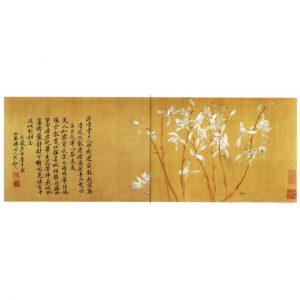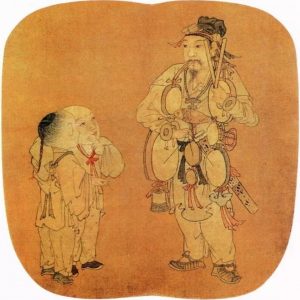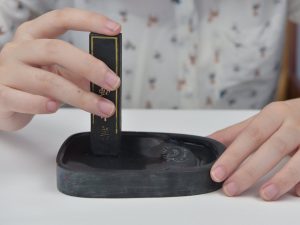I have already seen people simply dissolve these colour chips in room temperature without grinding them, it only takes a little longer.
I have to dissolve my home made paints with warm water so that I can use them, which is totally impractical when there is no kettle nearby. I suspect that the colour chips and the colors in the porcelain bowls have a different binder than rabbit skin glue because they are so easy to dissolve. Put an ink stick in water at room temperature and it dissolves very little ink, so it has to be grounded to get a lot of ink, which is more gentle than pouring very warm water over it, which would be way too much ink to work with if I could use it to dissolve an entire ink stick.
I read that the chips are often given as a binder resin and that comes from plants. Which one is used for colour chips?
I found a video on YouTube where peach sap glue has been added to the ink so that it runs less on the paper and stays moist longer on the palette. Peach sap glue is also a resin and resins are added to paints as binders.
Gum Arabic would run too much and is not suitable for Xuan paper while peach resin even has the property that the colour runs less and is more suitable.
As for the Maries colors I have them in a blue box with 18 colors in 9ml tubes, and they are very intense, they were the only ones that were available at Amazon at the time, I should have bought all three packs. #NaturalPigments
Visit the forum at https://ift.tt/2ZR7ax0 to join the discussion on Inkston Oriental Art Community Inkston Oriental Art Community » All Posts https://ift.tt/2XgLI2X Hi there,
Hi there, I have an existential question for the community. I have trouble making time for practice because I have trouble making my love of art a priority in my life. I’d love to hear from others about why this style of art has meaning and value in your life.
I have an existential question for the community. I have trouble making time for practice because I have trouble making my love of art a priority in my life. I’d love to hear from others about why this style of art has meaning and value in your life. Bonjour,
Bonjour,